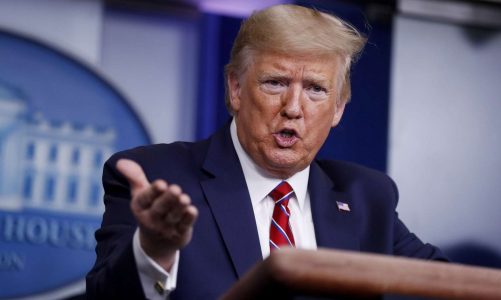President Donald Trump redoubled his optimism that a COVID-19 vaccine for the masses is just around the corner during the last presidential debate Thursday night with former Vice President Joe Biden. That goes against what most experts, including senior Trump administration officials, have said, as noted by debate moderator Kristen Welker.
But Trump insisted he believes in a more accelerated timeline that can be driven by the US military, which would apparently help roll out tens of millions of doses to the general population once a vaccine surpasses the obstacles. regulator.
“He has said that a vaccine will arrive soon in a few weeks. His own officials say, ‘It could take until 2021 at the earliest for enough Americans to get vaccinated,’ “Welker said.
“No, I think my timeline will be more accurate. I don’t know if they have military personnel like me, but we have our generals lined up, one in particular who is the chief of logistics, and this is a very easy distribution for him. He’s ready to go, “Trump replied.” As soon as we have the vaccine, and we hope to have 100 million vials, as soon as we have the vaccine, it will be ready to go. “
While it is true that the military may be involved in transporting some doses of vaccines, practical logistics suggest that it will not be on the scale that Trump suggested.
For one thing, the distribution of any COVID vaccine will likely depend on need through a tiered prioritization strategy. The U.S. Centers for Disease Control (CDC) and the National Institutes of Health (NIH) commissioned a framework for e5quitable distribution of the COVID vaccine by the National Academies of Sciences, Engineering, and Medicine.
That initial framework recommends, in its provision and allocation section, that the Department of Health and Human Services (HHS) create “the capacity and systems to collect and integrate the necessary data (digital and other) from health providers and providers to facilitate the identification and monitoring of people with pre-existing conditions and other high-risk characteristics ”for the first tranche of people to receive a vaccine.
In theory, a military aircraft could help with this transportation system. But there are many complexities involved given the nature of a coronavirus vaccine. Many vaccines currently in development, including those from pharmaceutical giants like Pfizer and smaller biotechnologies like Moderna, must be refrigerated at temperatures as low as negative 112 degrees Fahrenheit. Others, like one being developed by Johnson & Johnson, could eventually be stored at conventional refrigerator temperatures for up to three months.
While Air Force cargo aircraft may be equipped with the proper refrigeration units to transport ultracooled vaccines (in collaboration with the companies that develop them), there is another logistical dilemma: transferring these highly sensitive materials from a manufacturing site or truck to units in an army. . . plane.
That process could possibly contaminate the product, so experts point out that a more realistic option is likely to depend on supercooled cargo trucks that can transport a COVID vaccine directly to a medical facility that has its own specialized infrastructure.
On a broader level, Trump’s suggestion that a vaccine will be instantly available once the FDA grants it clearance or approval challenges the feasibility and nature of implementing a vaccine in less than a year. Like coronavirus testing, high-risk patients and front-line workers will have priority before the general population can receive their vaccinations, likely sometime next year.




